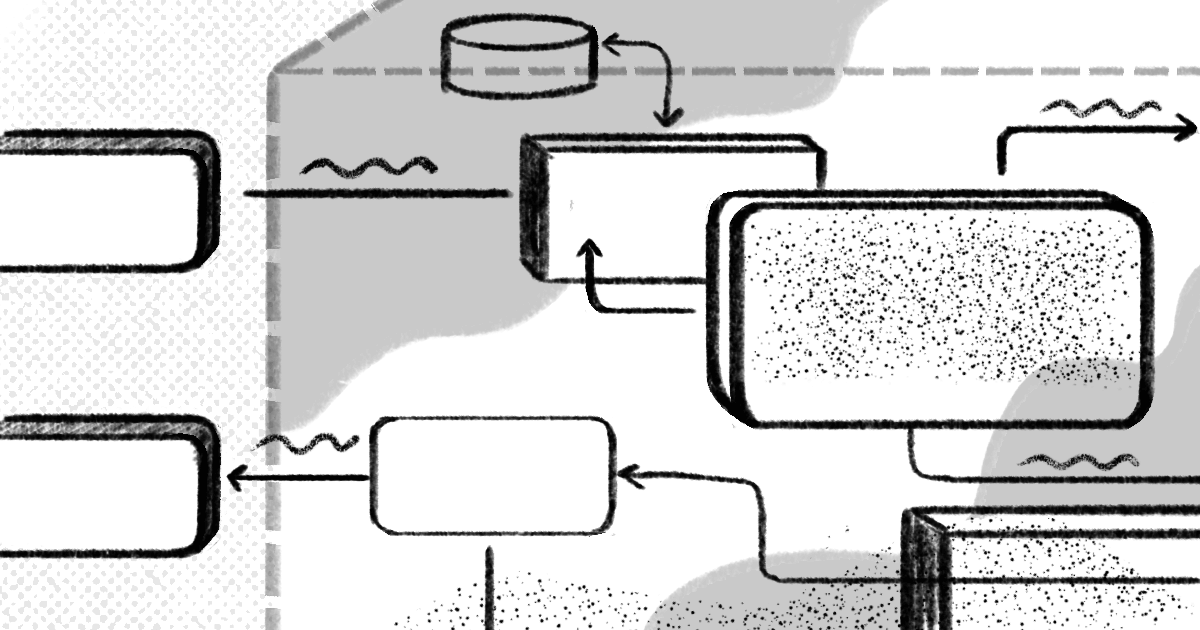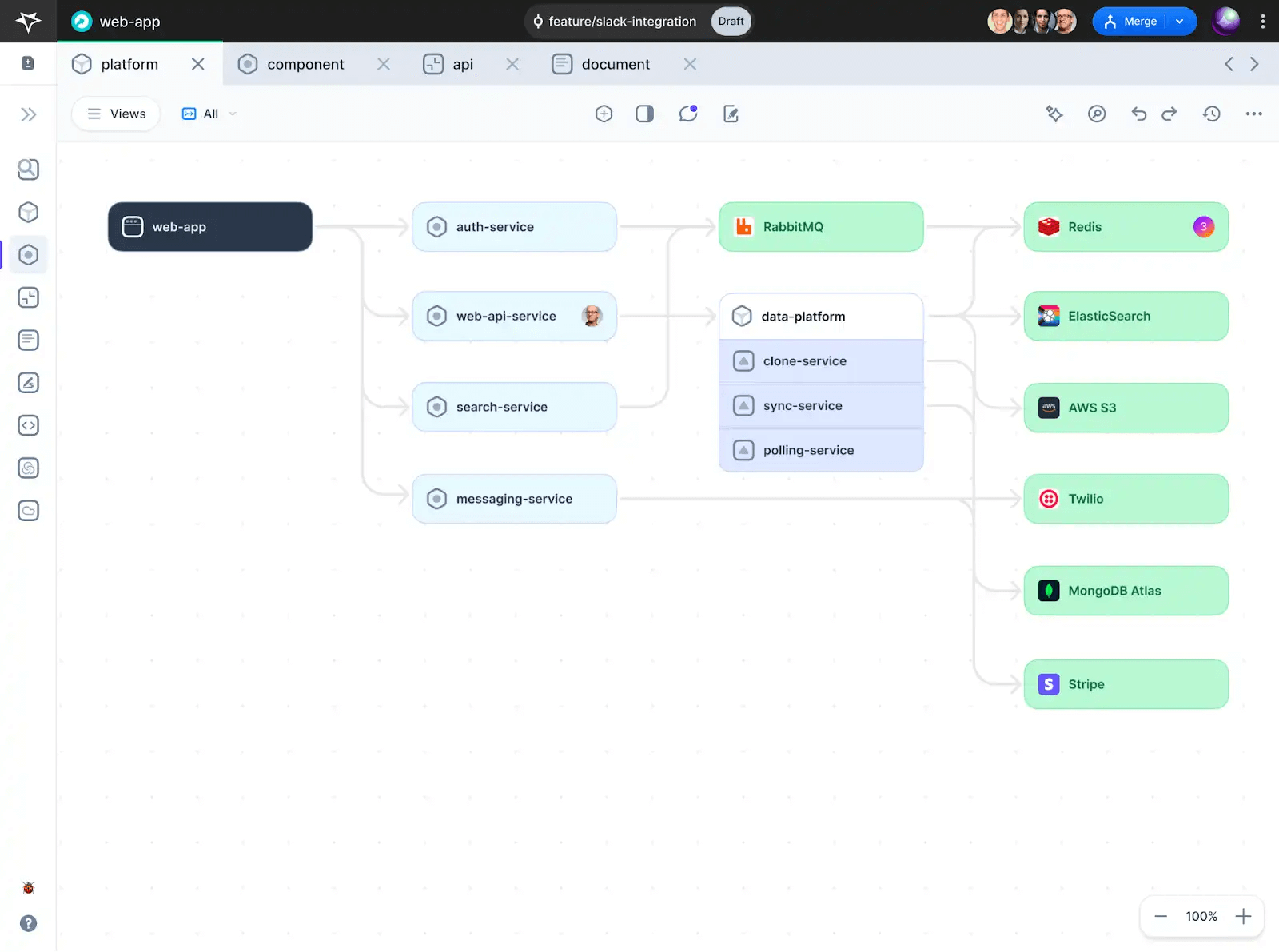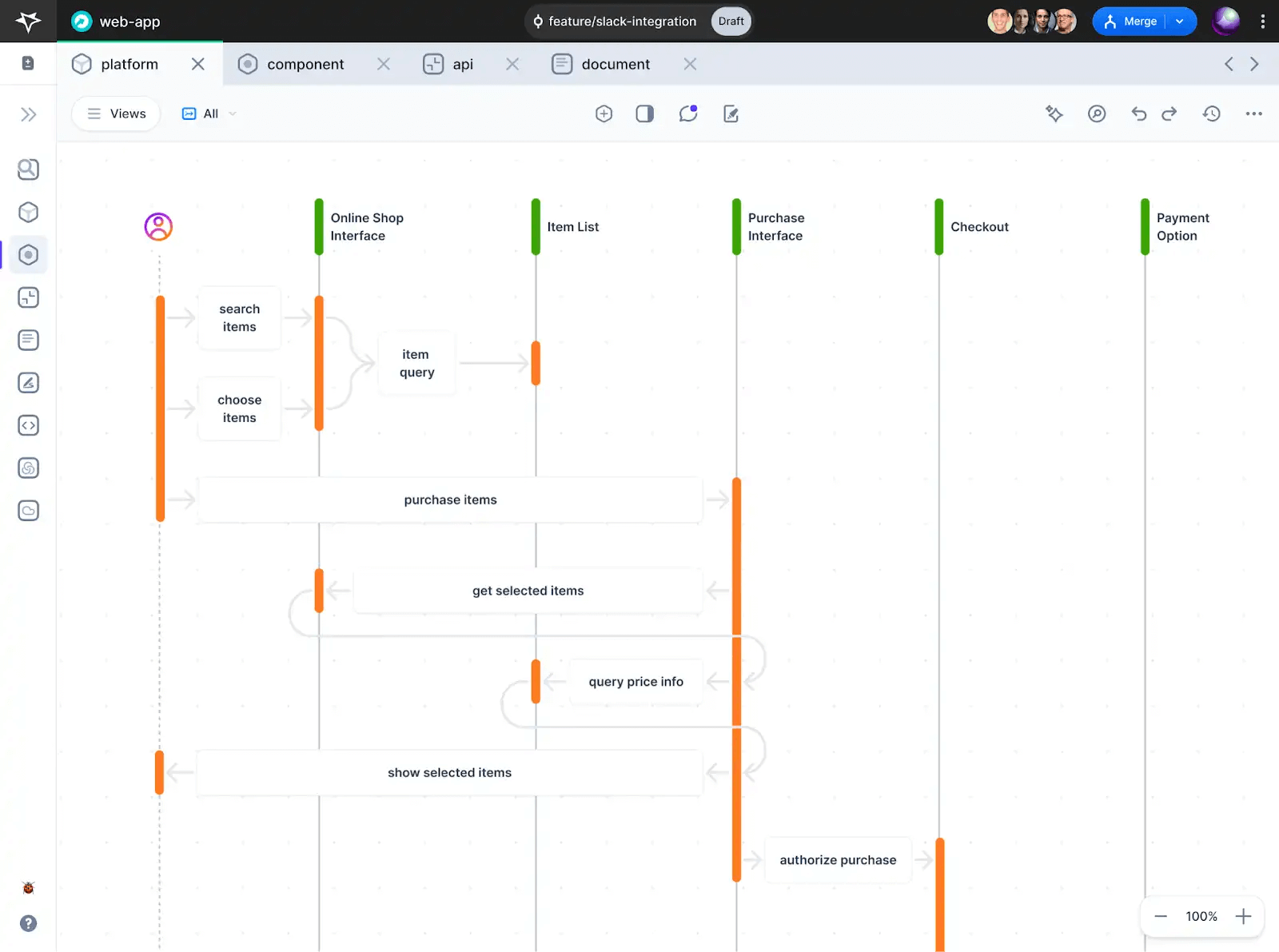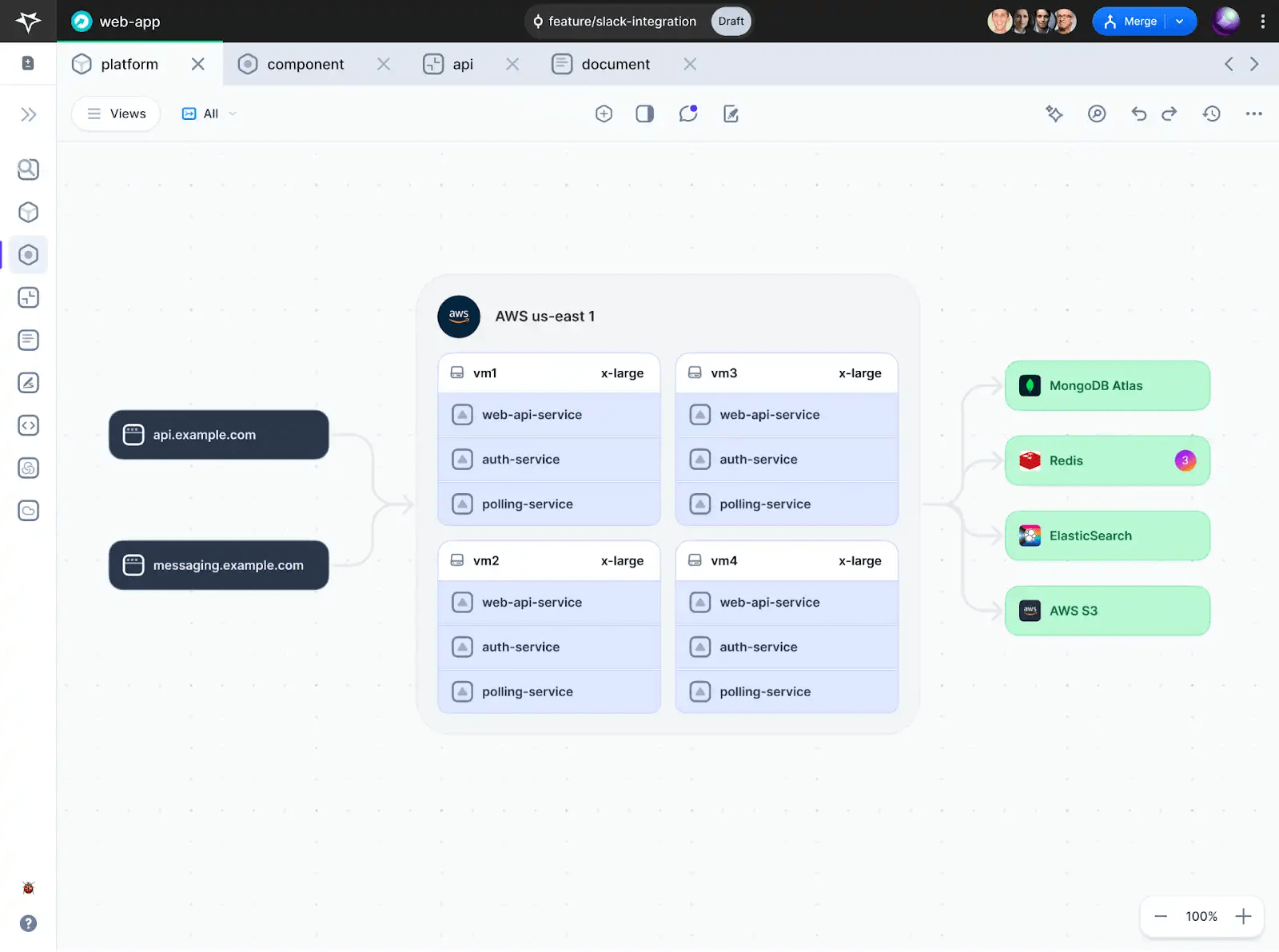Leveraging Different System Diagram Types
 Thomas Johnson
Thomas Johnson
When it comes to visualizing complex system architectures, relying on a single diagram type may not suffice. To effectively communicate the various aspects and perspectives of a system, it is crucial to employ different types of diagrams. By utilizing a combination of system architecture diagrams, sequence diagrams, and network diagrams, you can provide a comprehensive and multi-faceted view of your system's structure and behavior.
System Architecture Diagrams: The Big Picture
System architecture diagrams serve as the foundational representation of your system's high-level design. These diagrams focus on depicting the major components, their relationships, and the overall structure of the system. They provide a bird's-eye view, allowing stakeholders to grasp the system's core elements and how they interact with each other.
When creating system architecture diagrams, aim to strike a balance between simplicity and detail. Represent the key components using clear and consistent symbols, such as rectangles or boxes, and use lines or arrows to illustrate the connections and dependencies between them. Include concise labels to identify each component's role, making it easier for viewers to understand the system's architecture at a glance.

Example of a system architecture diagram created with Multiplayer.app
Sequence Diagrams: Unveiling System Behavior
While system architecture diagrams provide a static representation of the system's structure, sequence diagrams offer a dynamic view of how components interact and collaborate to fulfill specific system functionalities. These diagrams illustrate the sequence of messages and actions that occur between components over time.
Sequence diagrams are particularly useful for depicting scenarios such as user authentication, data retrieval, or processing flows. They showcase the order in which components communicate, the data is exchanged, and the outcomes of each interaction. By visualizing these sequences, developers can gain a deeper understanding of the system's behavior and identify potential bottlenecks or areas for optimization.
When creating sequence diagrams, use vertical lifelines to represent components and horizontal arrows to denote messages and interactions. Clearly label each message with its purpose and any relevant data or parameters. Use activation bars to indicate when a component is actively processing a request, and employ return messages to show the flow of data back to the initiating component.

Example of a sequence diagram created with Multiplayer.app
Network Diagrams: Unveiling the Infrastructure Landscape
Network diagrams provide a comprehensive view of the system's infrastructure and the relationships between its components from a networking perspective. These diagrams illustrate the physical and logical connections between various elements, such as servers, databases, load balancers, and firewalls.
By visualizing the network topology, network diagrams help stakeholders understand how data flows through the system, identify potential security risks, and plan for scalability and performance optimization. They also provide insights into the system's deployment architecture, showcasing how components are distributed across different environments or geographical locations.
When creating network diagrams, use standard symbols to represent network devices, such as circles for servers, cylinders for databases, and lines for network connections. Include relevant details such as IP addresses, ports, and protocols to provide a complete picture of the network configuration. Use color-coding or labeling to differentiate between different network segments or security zones.

Example of a network diagram created with Multiplayer.app
Conclusion
Creating effective system architecture diagrams is a vital skill for any software development team. By following best practices and leveraging the power of visual representation, teams can enhance communication, collaboration, and understanding of complex systems.
By leveraging multiple diagram types, including system architecture diagrams, sequence diagrams, and network diagrams, you can provide a comprehensive and multi-dimensional representation of your system's structure, behavior, and infrastructure. This holistic approach enables stakeholders to gain a deeper understanding of the system from various perspectives, facilitating effective communication, collaboration, and decision-making throughout the development lifecycle.
Next: Deep Dive
Subscribe to my newsletter
Read articles from Thomas Johnson directly inside your inbox. Subscribe to the newsletter, and don't miss out.
Written by
